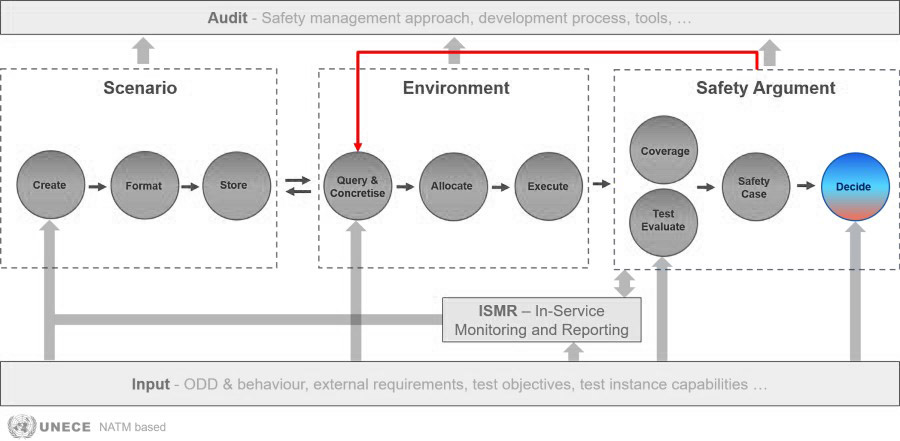Decide

The Decide block serves as the culmination of the performance safety assurance, where all outputs generated through coverage and test evaluate are integrated into a clear and final decision: whether the system can be considered safe enough for approval and deployment. This decision is expressed as a binary outcome—pass or fail—regardless of the complexity and variability of preceding evaluation metrics. While earlier Safety Assurance Framework (SAF) blocks may involve graded performance indicators, confidence intervals, or probabilistic risk assessments, these must ultimately support a definitive, traceable, and auditable conclusion that aligns with regulatory expectations.
This approach is reflected in both regulatory and consumer-focused safety processes. In the case of ALKS (UN Regulation No. 157), the pass/fail decision is governed by explicit criteria—for instance, the vehicle must maintain a minimum time headway of 0.6 seconds and respond correctly to cut-in vehicles or emergency stops. Each test case has clearly defined thresholds, and failure to meet any criterion results in a binary fail outcome. On the other hand, Euro NCAP illustrates how a structured aggregation of many binary sub-decisions can feed into an overall performance score. For example, a failure to detect and brake for a pedestrian in a night-time scenario is a binary fail within the Autonomous Emergency Braking (AEB) assessment, which contributes to the final star rating. In both cases, while the presentation of results may differ—approval vs. rating—the underlying logic is consistent: multiple test outcomes are assessed against pass/fail thresholds, and the accumulated results inform a final binary outcome on system.
